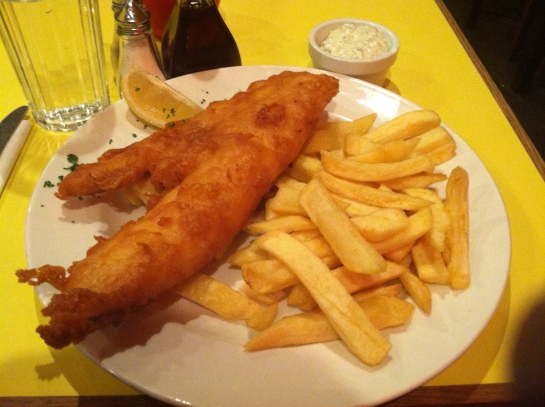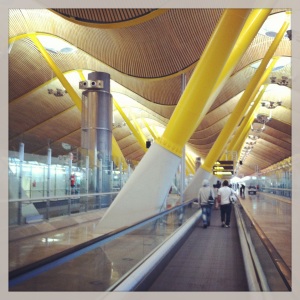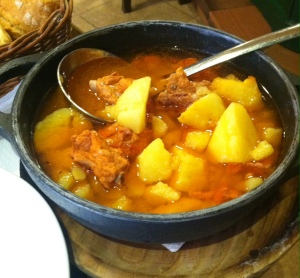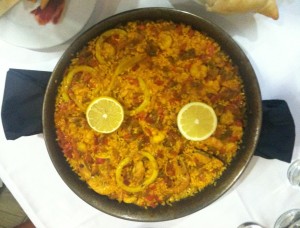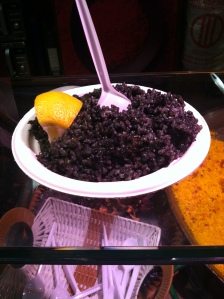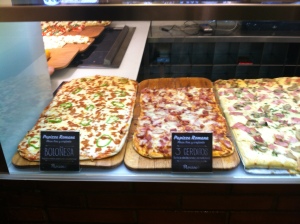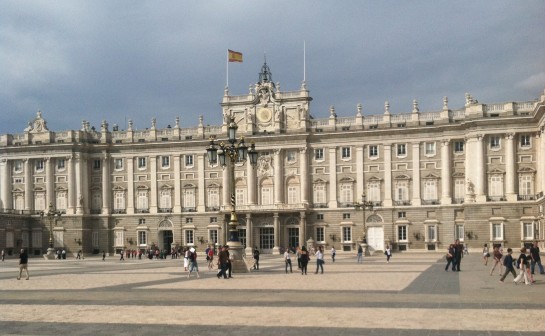The Time I Accidentally Stumbled onto the Filming Location of “The Holiday”
In what would otherwise be a Home Alone 2 and Love Actually dominated holiday movie marathon, The Holiday earns a special spot on my must-watch list every year. Why? Is it because I’m a hopeless romantic or have an affinity for romcoms starring Kate Winslet? Not exactly.
One of my favorite travel pastimes is hunting down filming locations.
The Holiday has a special place in my heart because I stumbled onto the set on a trip to Shere, a village outside of London, while studying abroad in 2006. You see, one of my college roommates came to visit England and had family in Woking, a town in Surrey. She suggested I meet her there, so I hauled ass from London to the countryside. After a lovely English dinner at her relatives’ home, the next day they drove us over to the quaint, English countryside village of Shere. It was positively what I pictured an English countryside to look like.
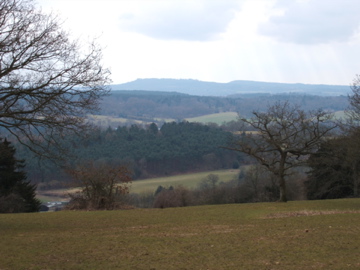

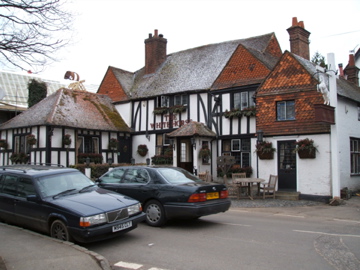

Post-shandys, we made our way over to St. James Church from where we could see Kate Winslet’s character’s house a short distance away. However, the “house” we could see was actually not a real house, but a set prop built specifically for the movie’s exterior shots. A tour guide at the church told us that if we got close enough to the house we’d see that it was no bigger than a glorified dollhouse, you know, the ones lucky kids have in their backyards.
Funnily enough, at the time I didn’t even consider that I might like the movie once it came out. Let alone find it so heartwarmingly charming that it’s been added into my Christmas movie rotation. So unfortunately, I didn’t take any pictures of “Iris’ House” or the set decorations around the village. Still though, it’s always fun to get to visit the filming locations of my favorite TV shows and movies when I’m traveling abroad or even in my own backyard here in Los Angeles.
To those of you who celebrate Christmas…Merry Christmas! To those who don’t…Happy Holidays! And to all…Happy New Year!
How to Order Food Like a Foodie (Even If You’re not One)
Since I’m still in a food coma from Thanksgiving on Thursday, I’m thinking a lot about food. Granted, I’m always thinking about food as I’m admittedly a borderline foodie. One of the greatest things about traveling is that it engages all five senses, my personal favorite is taste. When I traveled to Spain, I was with my sister who is not at all a foodie. There were a few occasions where my sister noticed that I had better luck ordering food that I enjoyed, while she ordered a few meals that were duds. Some of knowing what to order comes from experimentation, and other times it comes to down to tips and tricks picked up while eating in your own city or traveling.
1. Know the city or country’s food specialties.
You wouldn’t go to a small town in Italy and expect five-star Chinese food, but you would probably expect top-notch pasta. Look into what type of cuisine the country is known for on a macro level (i.e. in Spain it was ham, eggs, and seafood.) Additionally, on a micro level, research what type of food is best in the specific city you’re visiting (i.e. hard to go wrong with fish and chips in London).
2. Know nationalities food specialties.
This tip is tricky because I think it does require being a bit of experienced traveler and/or a foodie. Authentic food is the holy grail when eating while traveling. My sister and I quickly tired of tapas once we’d gotten to Barcelona, and it was impossible to find a restaurant that wasn’t serving them near Sagrada Familia. So in a fit of desperate hunger, I suggested we eat at a place run by Turkish people. They served food like döner kebabs, but also pasta dishes. My sister ordered seafood spaghetti that she barely touched. (The “seafood” included was two calamri rings, and one tiny freeze-dried shrimp. I don’t blame her for not eating it.) I ordered a chicken döner. Guess who liked their meal better? Instead of ordering what you would normally eat back home, pick (or guess) the specialty of the people running the restaurant you’re in.
3. Avoid dining at touristy places.
Don’t do it. Even if it’s a travel day and you’re starving, avoid touristy restaurants at all costs. It will lead to disappointment and overpriced pizza. I’ve eaten pizza all over the world, and never have I ever encountered a pizza as aggressively mediocre as the one I had at a tourist trap on Avinguda del Parallel in Barcelona. It wasn’t terrible, but it was terribly not good. The pizza had been frozen, wasn’t cut properly, and the cheese was like rubber glued to dough. ‘Twas a bad call eating here.
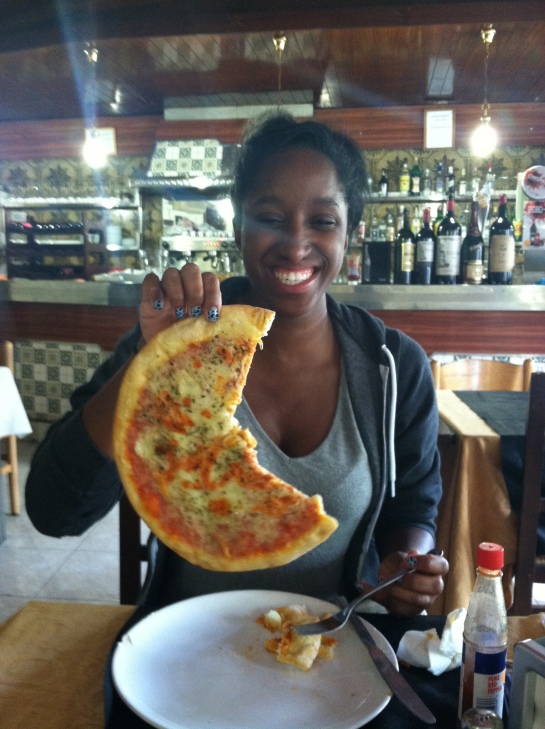
I’ve never had a pizza like this before, and I couldn’t stop laughing.
4. Notice where locals are eating.
If a restaurant’s patrons are a mixture of locals and tourists, take it as a sign that the place is good. Restaurants that attract both locals and tourists are often some of the best restaurants you can encounter in a city.
5. Ask the waiter.
Experienced waiters can tell you what items, dishes, and drinks are good at a place. And if they’re a great waiter, they can help you figure out the best dish for your own tastes, preferences, and appetite. In Stockholm, I had a great waitress who noticed that I’d fallen in love with a type of bread and proceeded to not only write down its name, but also encouraged me to bake it myself, which I did for Thanksgiving this year, and it was a huge success! A good waiter can be your greatest ally in the hunt for the perfect meal in a foreign city.
Top 3 Madrid Airport Transportation Options
Aerocity Airport Shuttle
Price: €20-27 Dependability: Bad.
Pros:
- No more than two or three groups of passengers to be dropped off.
- Cheaper than a taxi.
- Comfortable ride.
Cons:
- Reservations take some time to go through, so make them at least 24 hours prior to arrival.
- Kiosk is hard to find in airport upon arrival. (Once you exit the baggage area, go to the right. The kiosk it at the very end of the T4.)
- Long wait time upon arrival. (We waited for over an hour for our van and driver to pick us up.)
- Air-conditioning on the van wasn’t working at first.
- Like other airport shuttles, they may drop off the other passengers first, and you last.
- Cash only.
Exprés Aeropuerto (Bus)
Price: €5 Dependability: Good. RECOMMENDED
Pros:
- Cheapest airport transportation option.
- Several pick up times and locations.
- No reservation needed.
Cons:
- Cash only.
- Seats are very limited, so get on at one of the first stops, if you can.
- Uncomfortable ride, if you’re standing the whole way or have lots of baggage.
- Crowded bus.
- Pickpockets target the drop-off area, so keep an eye on your bags.
Taxi
Price: €35 Dependability: Good.
Pros:
- Comfortable ride.
- Door-to-door service.
- Good option if you have lots of baggage.
- No reservation needed.
Cons:
- Most expensive airport transportation option.
- €5-€10 of extra fees on top of the meter charge.
- Driver needs to know the exact terminal at airport for you to be dropped off.
- Cash only.
8 Best Cheap Places to Eat in Madrid
Eating in Madrid was…interesting. So much jamón, eggs, seafood, fried this, fried that, paella, tapas, tapas, and then more tapas. Dietary restrictions be gone. Despite not being a part-time vegan friendly city (pescatarians would love it though), once I temporarily abandoned my usual diet, there were plenty of cheap and good meals to be had in Madrid.
Lunch
Sideria La Burbuja Que Rie ($)
Calle Ángel, 16, 28005 Madrid, Spain
Neighborhood: La Latina
Lunch is the biggest meal of the day in Spain, and when I arrived at HRC Hotel in Madrid, Sideria La Burbuja Que Rie did not disappoint. I’m used to travel days being the worst day food-wise on any trip. For some reason, the combo of planes, trains, automobiles, and walking it takes to get from place to place makes me desperate for food close to my lodging. This restaurant gets extra points for its convenient proximity to HRC Hotel…it was right next door. For a mere €9, they offered a three-course lunch that included bread, wine/beer/soda, and an American-sized portion of dessert. The place was filled with both locals and tourists enjoying their almuerzo, always a good sign.
Tapas
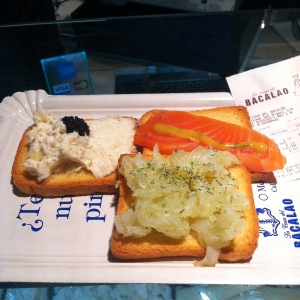
Plaza de San Miguel, s/n, 28005 Madrid, Spain
Neighborhood: Sol
There are many tapas restaurants along Calle Cava Baja, but at the very end of Madrid’s famous dining street, there’s a market to rival all other markets. It’s all the tapas you could want, all in one place, and all good. Mercado de San Miguel was a recommendation from another traveler I met while having tapas at Taberna Txakolina, and it did not disappoint. Mercado de San Miguel is hard to describe, but imaging putting a Whole Foods Prepared Foods bar, specialty food trucks, bakeries, bartenders, and multiple tapas bars all under one roof, you’d have Mercado de San Miguel. It’s also the easiest place in Madrid to find more diverse food options. If you’re tired of Spanish tapas, there’s a sushi stand, slider stand, and sausage stand too.
Honorable Mention:
Taberna Txakolina, Calle Cava Baja, 26, 28005 Madrid ($)
Neighborhood: La Latina
Benefitted by a social ambience and appealing decór, this popular spot is always packed. Get there a little early to snag a spot at the bar.
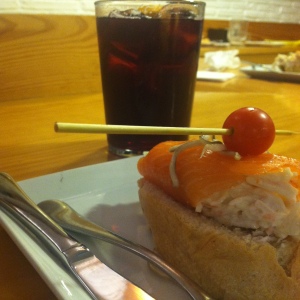
Paella
Cantina La Traviesa ($$)
Calle Cuchilleros, 10, 28005, Madrid, Spain
Neighborhood: Sol
Without researching for a specific paella restaurant in Madrid, we stumbled upon Cantina La Traviesa as we walked along Calle Cuchilleros. Enticed by the traditionally dressed waiters standing in the doorway outside inviting us in, we swiftly ordered the paella mixto. They also serve an appetizer of jamón iberico and cheese. The paella was delicious, but it’s such a large serving.
If you’d like to indulge in paella for dinner, I’d recommend you either have a party of 4 or more or be a man with a healthy appetite. The dish is very good and very filling. I love to eat and can eat my fair share of food, and even I couldn’t eat more than two helpings. It felt so wasteful financially and environmentally to order paella at Cantina La Traviesa and only eat a quarter of it, since I’m guessing they throw away the leftovers.
TIP: If you’re traveling solo and want paella, head to Mercado de San Miguel where you can get a satisfying tapas-sized portion for €4 from the paella stand.
Breakfast Cafe
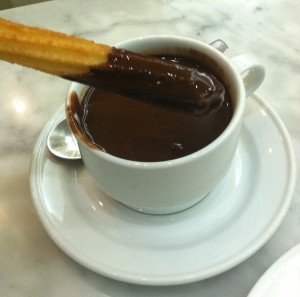
Pasadizo San Ginés, 5, 28013 Madrid, Spain
Neighborhood: Sol
Who would’ve thought chocolate and churros could go together? But they do, and they do it well. Chocolateria San Gines is a great place to start the day with a light breakfast of churros, chocolate, and cafe con leche. If you’re not into overly sweet breakfasts, take note that both the chocolate and churros are very lightly sweetened. Chocolateria San Gines is a bit touristy, but it’s worth a visit.
Late Night
PaPizza ($)
Gran Vía, 22, 28013 Madrid, Spain
Neighborhood: Malasaña
If you’re heading out of a bar or club late at night, PaPizza serves up some inexpensive and tasty slices in the wee hours of the morning. Grab one before heading to catch the last train.
Quick Eats
Faborit ($)
Paseo Prado, 24, 28014 Madrid, Spain
Neighborhood: Prado
If you don’t want a big sit-down meal or are just looking for a quick bite before heading on to the next museum, Faborit offers good sandwiches and salads, along with coffee and tea.
Honorable Mention:
Diurno, Calle de San Marcos, 37, 28004, Madrid, Spain
Neighborhood: Chueca
Diurno’s ultra modern interior and media library is appealing in and of itself. If you’re exploring Chueca, you can easily pick up pasta, a sandwich, or salad. They’ll plate the food for you, and you can either get it for take away or sit down and enjoy the ambience.
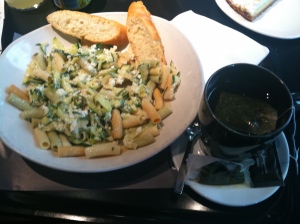
Around the Web: This Week’s Best Travel Posts
- Bored with London and Paris? Consider adding these cities to your “Where I Want to Visit Next” list. NYMag profiled a few off the beaten path cities considered travel alternatives to some of the world’s most popular destinations.
- Fan of interior design and unique lodging? This Berlin houseboat featured on The Designer Pad looks like a pretty darn attractive place to stay in Berlin.
- Traveling over the holidays? See tips on “How to Save Money When Booking Travel Online” over at The Huffington Post.
Thanks to David Hembrow from A View From The Cycle Path, cycling in the Netherlands looks fun and feasible. (This story on the impressive Dutch cycling culture came via The Atlantic: Cities.)
Bread in Europe: The All-Carb Diet
So I like bread. There’s nothing more comforting than warm, freshly baked bread or pastries on a chilly evening, but usually my bread consumption is limited to a nice restaurant dinner or on a sandwich at lunchtime. But bread as a fixture on the dining table is not a part of my daily mealtime routine. Not so in Europe. There’s bread for breakfast, lunch, and dinner. Desserts are often made of bread or and snacks are sandwiched between bread too. So. Much. Bread.
When the free breakfast of a small baguette and croissant was served at my Paris hostel last year, I overheard a girl at the next table say,
“And so my European all-carb diet continues.”
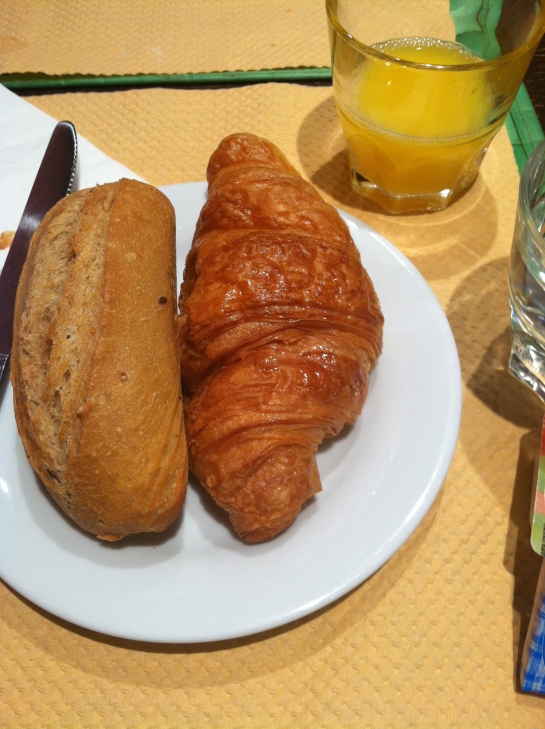
Free breakfast from Plug Inn Hostel in Paris.
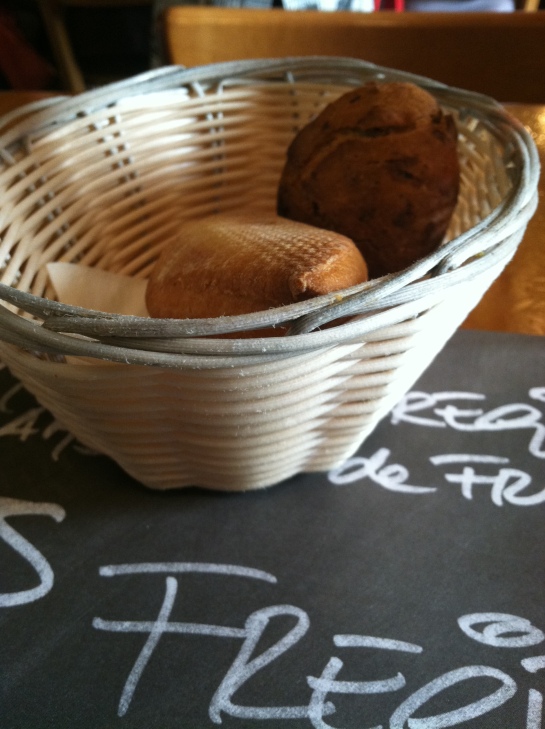
Bread basket in Barcelona
The all-carb diet appeared again earlier this month in Spain. Good thing there’s so much walking in European cities, burns all the carbs.Sweden and Germany boasted some breads pretty much unlike anything I’d ever tasted before. At the Berliner Gauklerfest, I tried langos, which is actually a Hungarian fried bread that comes with different toppings. I ordered mine with olive oil, salt, and chili peppers. It was savory and delicious.
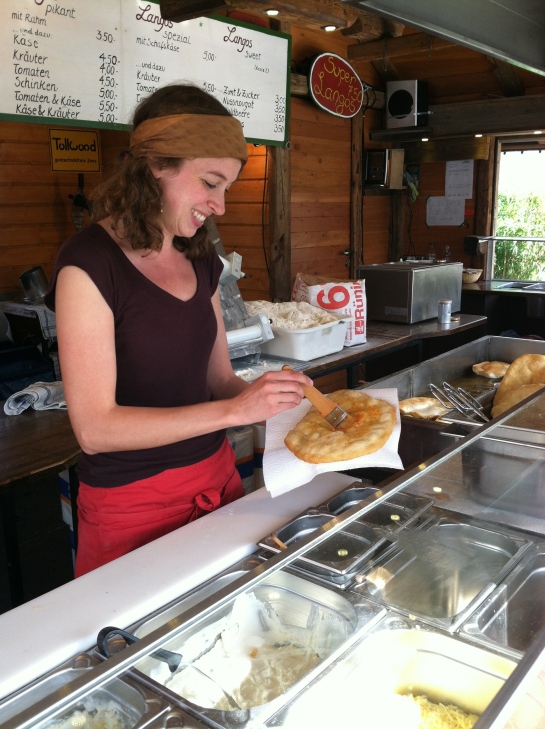
Prepping Hungarian fried bread in Berlin.
In Sweden, the bread baskets were more diverse than other places I’ve visited. There was knäckebröd, which is a crisp bread that reminded me of crackers, along with breadsticks. But it was the kavring, a type of rye bread that’s both sweet and savory, that I fell in love with.

Kavring at Akkurat in Stockholm, Sweden.
Even though I was sharing a table and a bread basket with a couple on a date (a story for another time), I shamelessly ate ALL the kavring in the basket. It was that good. My waitress noticed, and provided me with the name of the bread. When I told her that I didn’t think I could find it in America, she encouraged me to get a recipe online and bake it myself. And guess what? I asked for a dough mixer for Christmas, and did just that. Seriously, it was that good. The next time I’m in Europe I’ll stick to eating the bread that I try and love, and skip eating bread simply because it’s on the table.
Around The Web: This Week’s Best Travel Posts
Oh, those Buzzfeed lists. Sometimes they know how to getcha right in the heart. This week they posted a list called “31 Signs You’re Traveler at Heart,” and #2, #3,#5,#9,#11, #25 (I’m going to stop now before I list all the numbers) rang very true for me.
The people over at Jaunted wrote up this piece on things to do before you book a flight. I love this list because I swear by every tip they mention. Searching flexible dates and flying on Tuesdays, Thursdays, and Saturdays can really make international travel budget friendly.
Lastly, I leave you with an inspiring travel compilation video that’s new to me, even though it’s not a new video. I had lots of “I’ve been there! And there! And there too!” moments while watching this, and quite a few “I want to go there,” moments too, so I thought I’d share it with you guys.
Madrid is Like…
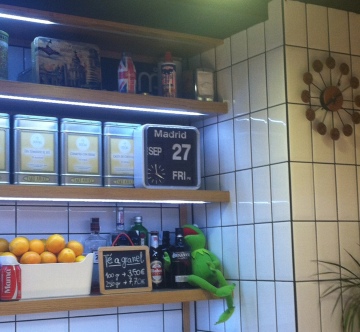
Madrid is like no place I’ve ever visited before and simultaneously, like any other big city. Whenever I visit a place for the first time, I like to sum up its personality in a few words. Summing up Madrid is difficult. There was no instant vibe I picked up on. Unlike other major cities I’ve visited, Madrid’s neighborhoods seemed to blend into each other without any strong visual distinctions. The differences between neighborhoods like Malasaña and La Latina were subtle, at best.
When I asked traveler friends to compare Madrid to Barcelona, Madrid often came out on the losing side. Even some Barcelonians I encountered on my trip turned their noses up at Madrid. But I tried to visit the capital of Spain with no expectations and an open mind. Here’s what I thought.
MADRID: FIRST IMPRESSIONS
Vibe
Uptight, formal, traditional.
Food & Dining
Filling. Lunch is around 2pm and usually contains four courses, including bread and dessert. It’s the biggest meal of the day. Most people head to tapas bars around 8pm, with dinner starting some time after 9pm. You’ll see families with small children and the elderly alongside eating dinner until midnight, alongside everyone else. International and vegan/vegetarian options are scarce.
Nightlife
Lively. Madrid loosens up once the sun goes down. Bars are packed until at least 2am on the weekday nights, and pretty much until the sunrises on weekends. If you’re out and indulging in sangria, cañas, or Spain’s beloved gin & tonics, remember pacing is important.
Fashion
Formal. I hate to say it, but Madrid is the worst dressed European city I’ve ever visited. (Sorry, Madrid!) Most guys were wearing an ensemble that included an ill-fitting button-down shirt tucked into khakis or jeans, topped off with sneakers (men 30 and under) or dress shoes (men 30 and up). For women, sundresses appeared to be the way to go. I couldn’t get into it.
Pick-Up Skills
Low. Guys in Madrid briefly offered me suggestions on where to go, gave a double-cheek kiss, and disappeared into the night.
Language Barrier
High. Many people I encountered, even in hotels, restaurants, and taxis, spoke little to no English. Your Spanish language book or smartphone translator app will definitely be needed here. If you’re like me and already know how to speak some Spanish, you’ll get plenty of practice!
Walkability
Very high. Madrid is an extremely walkable city. It’s the one thing Madrid truly has going for it. For example, it might take 22 minutes to get to a museum by Metro, but I’d discover I could walk there in 24 minutes. So I walked, a lot. I never encountered a spot in the city that was more than a 30 minute walk from the two hotels I stayed in. When I took the Metro, it was only because my feet were tired.
Itinerary Scheduling
Not necessary. If you’re not a fan of a formal itinerary, this is a city where it’s pretty easy to wing it. Just remember that the museums are generally free the last two hours they’re open (the Prado WILL have a long line, but it moves quickly), and that some shops and restaurants are closed for siestas between 3:00pm-5:00pm.
Around The Web: This Week’s Best Travel Posts
Now this is a cool idea for a travel business that makes a difference in peoples’ lives. Mashable did a quick profile on Kenji Summers, who started a company that helps take creative-types who have never been out of the country to international destinations. This is one of those “why didn’t I think of that?” ideas.
And in keeping with theme of great business ideas, thanks to the awesome folks over at Vagabondish I learned that Norweigian Air Shuttle is offering super cheap flights to Scandinavian cities from the U.S. Roughly $300 to get to Stockholm? Stop it. Given my love of all things Scandi (that’s what I like to call Scandinavia), if flights with these prices existed all the time, I would be somewhere in Scandinavia all. the. time.
The goods from Vagabondish kept coming this week as Mary-Ryan Lambert wrote a piece on “What Apple’s New iOS 7 Really Means for Travelers.” I’m upgrading my iPhone to iOS7 as I write this post, and am eagerly looking forward to using the new Location Services to find new travel apps the locals use once I get to Spain next week.
